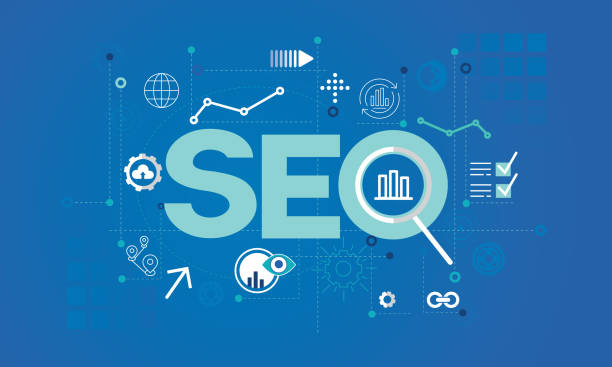What is Technical SEO and Why Does It Matter?

What is Technical SEO and Why Does It Matter?
Technical SEO refers to a set of actions taken to improve the structure and infrastructure of a website so that search engines like Google can easily crawl and index the site.
This process includes optimizing various elements such as site speed, site architecture, mobile compatibility, security (HTTPS), and more.
The importance of technical SEO is that if your site has technical problems, even with excellent content, you cannot achieve high rankings in search results.
In fact, technical SEO is the foundation of a successful SEO strategy.
SEO is very important for improving the site’s ranking in search engines.
A website with a proper technical structure helps search engines better understand your content and, as a result, achieve a better ranking in search results.
In other words, technical SEO plays an important role in increasing the visibility of your website online.
If #technical SEO is done correctly, you can attract more organic traffic to your site and ultimately achieve your business goals.
In addition, technical SEO helps improve user experience.
A fast, secure, and mobile-compatible website ensures that users have a better experience and spend more time on your site.
This not only helps improve your site’s ranking but also increases conversion rate and customer loyalty.
Did you know that customers’ first impression of your company is your website? With a powerful corporate website from Rasaweb, multiply the credibility of your business!
✅ Exclusive and eye-catching design tailored to your brand
✅ Improved user experience and increased customer acquisition
⚡ Get a free consultation!
Crawling and Indexing – The First Step in Technical SEO
![]()
Crawling and Indexing – The First Step in Technical SEO
Crawling and Indexing are two fundamental processes that search engines use to identify and store website information.
Crawling means search engine robots visiting different pages of the website and collecting their information.
Indexing also means storing this information in the search engine database and preparing it for display in search results.
Therefore, if search engines cannot properly crawl and index your site, your content will not be displayed in search results.
To ensure that your site is properly crawled and indexed, you need to take actions such as creating and updating the XML sitemap (Sitemap XML), using the robots.txt file to control robot access, and fixing crawl errors.
The XML sitemap helps search engines better understand your site structure and identify all important pages.
The robots.txt file also allows you to specify which pages of the site should not be crawled by robots.
Fixing crawl errors also helps search engines to access all pages of your site without any problems.
In addition, you need to make sure that there are no blocked or duplicate pages on your site.
Blocked Pages refer to pages that have been excluded from indexing for reasons such as using the noindex meta tag or robots.txt instructions.
Duplicate Content also refers to pages that have similar content and can cause problems with indexing.
To fix these problems, you can use the canonical tag to show search engines which version of the page is the original.
Optimizing Site Speed for SEO and User Experience

Optimizing Site Speed for SEO and User Experience
Site speed is one of the important factors in SEO and user experience.
A fast site not only makes users have a better experience, but also helps search engines better crawl and index your site.
Google has explicitly stated that site speed is one of the ranking factors and faster sites achieve better rankings in search results.
To optimize site speed, you can take actions such as optimizing images, using caching, reducing code size (Minification), and using a content delivery network (CDN).
Image optimization includes reducing image size without sacrificing quality, using appropriate formats such as JPEG and PNG, and using alt tags to describe images.
Using caching helps browsers store site files and load the site faster on subsequent visits.
Reducing code size also includes removing spaces, comments, and unnecessary code from HTML, CSS, and JavaScript files.
Using a content delivery network also helps distribute site files across different servers around the world and allows users to load the site from the nearest server.
| Speed Optimization Factors | Descriptions |
|---|---|
| Image Optimization | Reduce size and choose appropriate image formats |
| Using Caching | Store files in the browser for faster loading |
| Reduce Code Size | Remove unnecessary code from HTML, CSS, JavaScript |
| Using CDN | Distribute files on different servers for faster access |
In addition, you should use tools such as Google PageSpeed Insights and GTmetrix to analyze site speed and identify problems.
These tools help you identify your site’s weaknesses and find appropriate solutions to improve speed.
Remember that optimizing site speed is an ongoing process and should be done regularly.
Site Architecture and User-Friendly Navigation

Site Architecture and User-Friendly Navigation
Site Architecture refers to the structure and organization of different pages of a website.
A good site architecture helps search engines easily find all the pages of the site and understand their content.
User-Friendly Navigation also helps users easily navigate the site and find the information they need.
A good site architecture should be hierarchical, logical, and understandable.
Important pages of the site should be accessible and users should not need more than a few clicks to find them.
SEO is very important to site architecture.
To create a good site architecture, you can use methods such as using categories and subcategories, creating landing pages for important topics, and using internal links.
Categories and subcategories help you logically organize your site’s content and users can easily find the topics they are interested in.
Landing pages also help you attract users’ attention to important topics and increase conversion rates.
Internal links also help you strengthen the connection between different pages of your site and show search engines which pages are more important.
In addition, you should avoid creating Orphan Pages.
Orphan Pages are pages that have no internal links to them and are difficult for search engines to find.
To prevent the creation of Orphan Pages, you need to make sure that all pages of your site are linked from at least one other page.
You should also avoid creating Broken Links.
Broken Links are links that point to pages that no longer exist.
To find and fix broken links, you can use tools such as Broken Link Checker.
Do visitors to your online store leave before buying? Don’t worry anymore! With Rasaweb’s professional online store design services, solve the problem of not converting visitors into customers forever!
✅ Significant increase in conversion rate and sales
✅ Unique and attractive user experience
⚡ Contact us now for a free consultation!
Mobile Optimization – Mobile-First Indexing

Mobile Optimization – Mobile-First Indexing
Given that more than half of web traffic comes from mobile devices, mobile optimization is one of the most important factors in SEO.
Since 2019, Google has officially used the Mobile-First Indexing approach, meaning that the mobile version of your site is the basis for indexing and ranking.
Therefore, if your site is not optimized for mobile, you will not achieve good rankings in search results.
To optimize for mobile, you can use methods such as using responsive design, optimizing site speed for mobile, and using AMP (Accelerated Mobile Pages).
Responsive design allows you to design your site so that it automatically adapts to the screen size of different devices.
Optimizing site speed for mobile includes reducing image size, using caching, and reducing code size.
AMP is also an open-source framework that allows you to create fast and lightweight mobile pages.
In addition, you need to make sure that your site has a good user experience on mobile devices.
This includes using readable fonts, large buttons, and simple forms.
Also, you should avoid using annoying pop-ups and excessive advertising on the mobile version of your site.
To test your site’s mobile compatibility, you can use Google’s Mobile-Friendly Test tool.
The Importance of HTTPS and Website Security

The Importance of HTTPS and Website Security
HTTPS (Hypertext Transfer Protocol Secure) is a secure protocol that encrypts information between the user’s browser and the website’s server.
Using HTTPS not only increases website security but also helps improve the site’s ranking in search results.
Google announced in 2014 that HTTPS is a ranking factor and sites that use HTTPS achieve a better ranking in search results.
To use HTTPS, you must purchase an SSL (Secure Sockets Layer) certificate for your domain and install it on your server.
An SSL certificate is a digital file that verifies your website’s identity and assures browsers that communication with your site is secure.
After installing the SSL certificate, you need to change your site settings so that all traffic is routed through HTTPS.
This includes updating all internal and external links to HTTPS and setting up a 301 redirect from HTTP to HTTPS.
In addition to HTTPS, you should also take other measures to increase the security of your website.
This includes using strong passwords, updating software and plugins, and using a website firewall.
You should also regularly back up your website so that you can quickly restore your site in case of any problems.
Structured Data and Schema

Structured Data and Schema
Structured Data refers to information that helps search engines better understand the content of web pages.
Schema is a markup language used to define structured data.
Using schema, you can tell search engines that a particular page is about a product, an article, an event, or a place.
Using structured data can cause Rich Snippets to be displayed in search results, which increases click-through rate (CTR) and site traffic.
To use structured data, you can use different formats such as JSON-LD, Microdata, and RDFa.
JSON-LD (JavaScript Object Notation for Linked Data) is the simplest and most widely used format and Google recommends it.
To add structured data to your site, you need to place the JSON-LD code in the <head> tag of the desired pages.
| Schema Type | Descriptions |
|---|---|
| Product | To specify information about a product |
| Article | To specify information about an article |
| Event | To specify information about an event |
| LocalBusiness | To specify information about a local business |
To test your structured data, you can use Google’s Rich Results Test tool.
This tool helps you make sure that your structured data is implemented correctly and that there are no problems.
Remember that using structured data is an ongoing process and you should regularly update your data.
Fixing 404 Errors and Proper Redirects

Fixing 404 Errors and Proper Redirects
404 (Not Found) errors occur when a user or search engine tries to access a page that does not exist.
These errors can cause a bad user experience and reduce the site’s ranking in search results.
Redirects also allow you to direct users and search engines from one page to another.
Using proper redirects can help you fix 404 errors and redirect old links to new links.
SEO allows you to create the best redirects.
To find 404 errors, you can use tools such as Google Search Console and Broken Link Checker.
After finding 404 errors, you can use a 301 redirect (Permanent Redirect) to direct users and search engines to the appropriate page.
A 301 redirect tells search engines that the page has been permanently moved to the new address and all link equity (Link Juice) is transferred to the new page.
In addition to the 301 redirect, there are other redirects, such as the 302 redirect (Temporary Redirect) and the Meta Refresh redirect.
A 302 redirect is used to temporarily redirect users to another page and should not be used to fix 404 errors.
The Meta Refresh redirect is also an inappropriate method of redirecting and should be avoided.
Remember that using proper redirects can help improve your site’s SEO and provide a better user experience for users.
Does your current website convert visitors into customers or drive them away? Solve this problem forever with professional corporate website design by Rasaweb!
✅ Build credibility and strong branding
✅ Attract target customers and increase sales
⚡ Get a free consultation now!
Optimizing the Robots.txt File for Better Crawling

Optimizing the Robots.txt File for Better Crawling
The robots.txt file is a text file located in the root of the website domain that tells search engines which pages of the site should not be crawled.
Using the robots.txt file, you can prevent crawling of unnecessary pages such as admin pages, duplicate pages, and pages containing sensitive information.
Optimizing the robots.txt file can help search engines use their resources more effectively to crawl important pages of your site and achieve a better ranking in search results.
SEO and Robots.txt have a direct relationship.
To create and optimize the robots.txt file, you need to be familiar with the instructions of this file.
The main instructions of the robots.txt file include User-agent (specifying the desired robot), Disallow (specifying the pages that should not be crawled), and Allow (specifying the pages that should be crawled).
For example, to prevent all pages of the site from being crawled by all robots, you can use the following instruction
User-agent: * Disallow: /
To prevent crawling of a specific page, you can use the following instruction
User-agent: * Disallow: /page.html
In addition, you can use the Allow instruction to override the Disallow instruction in subdirectories.
For example, if you have blocked all pages in a folder with the Disallow instruction, you can use the Allow instruction to allow search engines to crawl a specific page in that folder.
User-agent: * Disallow: /folder/ Allow: /folder/page.html
To test your robots.txt file, you can use Google’s Robots Testing Tool.
This tool helps you make sure that your robots.txt file is working correctly and that there are no problems.
Monitoring and Analyzing Technical SEO

Monitoring and Analyzing Technical SEO
Technical SEO is an ongoing process and should be monitored and analyzed regularly.
By monitoring and analyzing technical SEO, you can identify problems with your site and take the necessary actions to fix them.
There are various tools for monitoring and analyzing technical SEO, including Google Search Console, Ahrefs, and SEMrush.
These tools help you check information such as crawl errors, site speed, mobile compatibility, and site security, and get accurate reports on the technical SEO performance of your site.
Using Google Search Console, you can identify crawl errors on your site and take the necessary actions to fix them.
You can also submit your XML sitemap to Google Search Console to help search engines better crawl the pages of your site.
Using Ahrefs and SEMrush, you can check information such as backlinks, keywords, and your competitors, and improve your SEO strategy.
In addition to using tools, you should regularly review your technical SEO reports and identify patterns in the data.
For example, if you notice that your site speed has decreased, you should investigate the cause of this decrease in speed and take the necessary actions to improve site speed.
You should also regularly follow the changes to Google’s algorithm and coordinate your SEO strategy with these changes.
In summary, SEO is a continuous process that requires constant monitoring, analysis, and optimization.
By doing SEO regularly, you can improve your site’s ranking in search results and attract more organic traffic to your site.
#SEO is the best way to improve your site in search engines.
SEO
Frequently Asked Questions
| Question | Answer |
|---|---|
| What is SEO? | SEO, or Search Engine Optimization, is a process for increasing the quality and quantity of website traffic by improving the site’s ranking in the natural (organic) results of search engines like Google. |
| What are the main types of SEO? | SEO is divided into three main categories: On-Page SEO, Off-Page SEO, and Technical SEO. |
| What does On-Page SEO include? | On-Page SEO includes optimizing elements within the website, such as keywords, page title (Title Tag), meta description (Meta Description), content, URL structure, images, and internal links. |
| What is Off-Page SEO? | Off-Page SEO refers to activities outside the website that help improve its ranking, such as Backlink Building, social media marketing, and Brand Mentions. |
| What is Technical SEO? | Technical SEO deals with optimizing the technical aspects of the website to help search engines crawl and index it better. This includes site speed, mobile-friendliness, site structure, sitemaps, and Robots.txt file. |
| What role do keywords play in SEO? | Keywords are terms that users enter in search engines. Using relevant keywords correctly and purposefully in the content and elements of the site helps search engines understand the subject of your page and display it in relevant searches. |
| What is a Backlink and why is it important? | A Backlink, or inbound link, is a link from one website to another. Backlinks act as a “vote of confidence” from other sites for search engines and play an important role in the credibility and increased ranking of the site, especially if they are from reputable sites. |
| What effect does quality content have on SEO? | Quality, relevant, comprehensive, and unique content not only attracts and retains users but also shows search engines that your page is valuable. This helps improve ranking, reduce Bounce Rate, and increase user time on the site. |
| Why is site loading speed important for SEO? | Site loading speed is an important ranking factor for Google. Faster sites provide a better user experience, have lower bounce rates, and are preferred by search engines. |
| Is SEO a one-time process? | No, SEO is a continuous and long-term process. Search engine algorithms are constantly changing, competition is increasing, and site content also needs to be updated. Therefore, SEO requires continuous monitoring, analysis, and optimization. |
and other services of Rasa Web advertising agency in the field of advertising
Intelligent website development: An effective tool for analyzing customer behavior with the help of Google Ads management.
Intelligent direct marketing: A fast and efficient solution for attracting customers with a focus on intelligent data analysis.
Intelligent marketing automation: Designed for businesses looking to analyze customer behavior by customizing the user experience.
Intelligent digital branding: An exclusive service for growing customer acquisition based on precise audience targeting.
Intelligent marketing automation: An exclusive service for growing digital branding based on optimizing key pages.
And more than hundreds of other services in the field of internet advertising, advertising consulting and organizational solutions
Internet Advertising | Advertising Strategy | Advertorial
Resources
Zoomit: SEO Training
,Faraz Network: Technical SEO
,Webramz: Technical SEO
,Nakhl Sabz: Technical SEO
? For the leap of your business in the digital world, Rasaweb Afrin is with you. With us, in addition to benefiting from expert advice in the field of digital marketing, you can experience the best modern user interface website design for your brand and have a strong presence in the online space.
📍 Tehran, Mirdamad Street, next to the Central Bank, South Kazerun Alley, Ramin Alley No. 6



